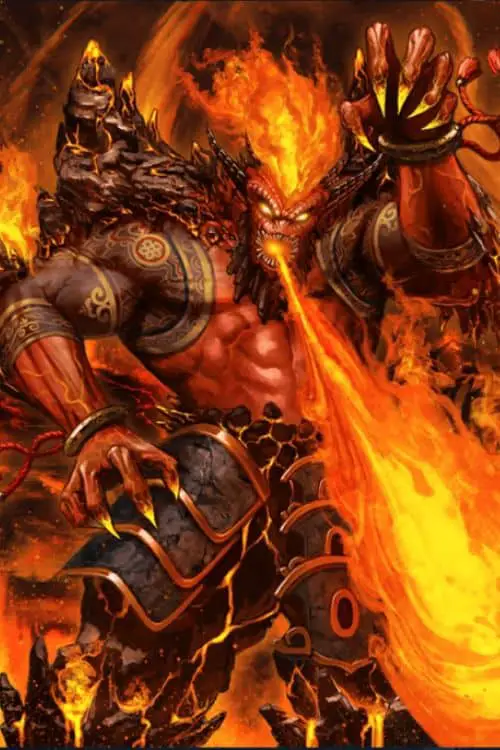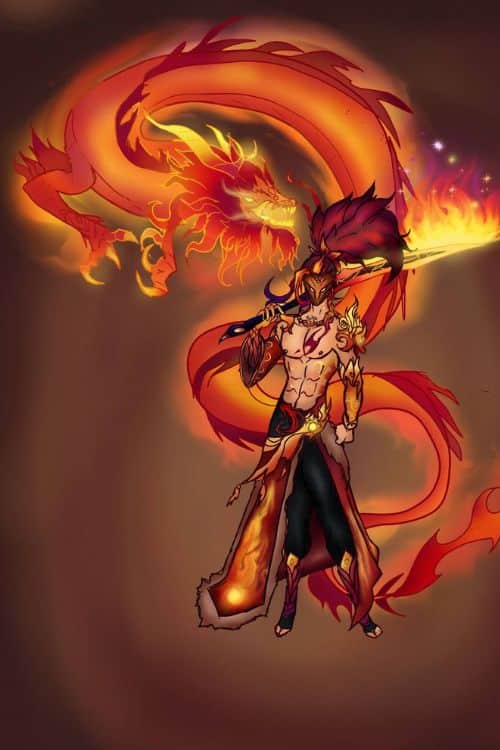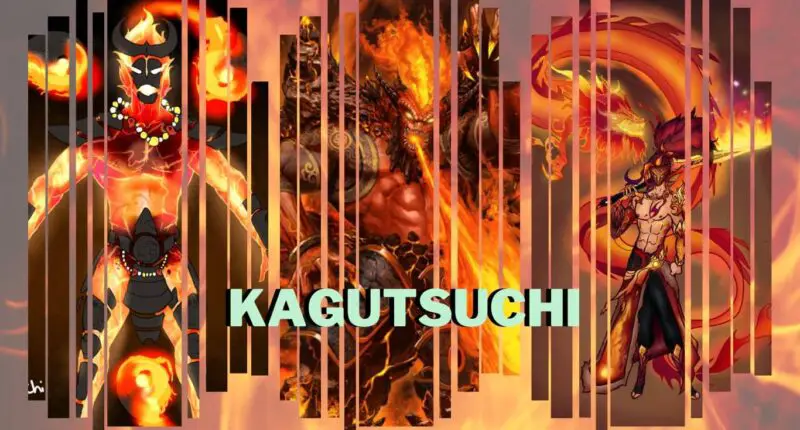Kagutsuchi – The Japanese God of Fire: Homusubi is another name for Kagutsuchi, the Shinto deity or god of fire. The father of 8 warrior deities and 8 mountain deities, among others, the fire deity is the child of Izanagi and Izanami. Kagutsuchi became a crucial part of the Shinto ritual and a regular recipient of soothing offerings as a result of the destructive force of fire in a society where structures were typically composed of wood and paper.
Offspring & Family History
Kagutsuchi-no-kami was said to have been born from Izanami, a member of the Shinto creator gods, however, due to his intense heat, he also killed his mother. This is according to the Kojiki and Nikon Shoki, written in the eighth century CE. His father chopped off Kagutsuchi’s head with his enormous sword, the Ame-no-o-habari-no-kami, because his father, Izanagi was not particularly pleased with the outcome. Eight other gods, all of whom were strong swordsmen kami, were created from the blood that flowed out over the surrounding rocks and trickled down the sword’s blade and hilt.
Takemikazuchi-no-kami and Futsunushi-no-kami are the two most significant of these martial gods; the former is also a thunder god and a patron of the arts, and it is said that he famously conquered Namazu, a gigantic catfish who live beneath the earth and flips his tail to generate earthquakes.
Kuraokami-no-kami, who is described as a dragon and rain deity in the Manyoshu poem anthology, was one of two other gods created from Kagutsuchi’s blood. Amatsumikaboshi, the god of Venus, the Evening Star, is another. She goes by the alias Amenokagasewo.

After Kagutsuchi’s head was severed, the narrative goes on to describe how eight other gods were created from nearly every part of the fire god’s body, including his left foot and reproductive organs. These mountain gods stood for a variety of mountains, including those that were forested, had moors, were remote, contained iron, offered routes to neighboring valleys, and, of obviously, volcanoes.
The formation of the iron and the invention of swords are depicted in the legends of Kagutsuchi, which may be a mythical explanation for the importation of iron and other superior metal goods into Japan at the start of the Yayoi Period by immigrants from mainland Asia, many of whom were likely warriors.
Izanami gives birth to 3 additional gods in an alternate before she passes away, including the water kami. The gourd, the clay princess, the water reed, and Mizuhame-no-mikoto. The dying mother gives the four instructions to keep an eye on Kagutsuchi and, if required, take action to calm him down if he ever goes out of control.
Water carried in a gourd was the primary fire-fighting tool of the ancient Japanese. Clay and water reeds were frequently used to smother the fire. In some regions of Japan, reed bundles are still placed in the roof eaves as part of a midwinter ceremony to keep them available in case a fire should start.
Mythology
Being seen as a god who was either made of fire or who always emitted fire, even as a child, caused a significant problem. Izanami, Kagutsuchi’s mother, was fatally burned at the time of his birth. In retaliation, Kagutsuchi’s father Izanagi severed his head from his body, then split it into eight pieces, creating eight volcanoes.
Watatsumi and Kuraokami, two water gods, were created by the blood that Izanagi’s totsuka sword spilled. On Mt. Atago, a mountain close to Kyoto, where it is believed he lived, a shrine was erected in his honor.
Shinto rituals with fire
As a result of their traditional use of extremely flammable wooden and paper walls having wood shale or grass roofs, Japanese houses have historically been built with a great fear of fire and the destruction it might inflict. Over the years, fires have destroyed practically every significant old structure and temple in the ancient towns of Japan. In the capital city of Edo, modern-day Tokyo, fires were so common that they were dubbed “the flowers of Edo” (1603-1868 CE).

The fact that ceremonies to placate and ward off Kagutsuchi were indeed a common part of the Shinto ceremony is not surprising. Kagutsuchi is sometimes referred to in these rites and prayers as Homusubi, which means “he who creates fires.”
The imperial court, whose vast palace complexes were repeatedly destroyed by fire, sponsored the Ho-shizume-no-matsuri, a festival held twice a year that the prehistoric Japanese even devoted to Kagutsuchi. The purpose of the ceremony was to appease the god and convince him to hold off on unleashing his awful flames for an additional six months. The purifying fire used in Shinto rites termed as kiri-bi, which was historically created by rubbing together 2 pieces of hinoki wood, a kind of cypress, contrasts with the devastating fire of Kagutsuchi.
Atago Gongen, another god of fire who is seen as an avatar of the Buddhist deity Jizo, and Kagutsuchi are sometimes compared. Atago Gongen, a more benevolent character who serves as a defender against fire or a preserver of it, is a more prominent figure in Japanese mythology.
Also Read: 15 Qualities of Lord Rama Everyone Should Learn



